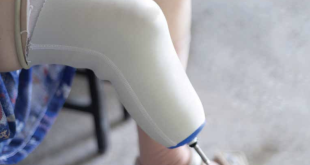A new World Health Organization (WHO) study published in The Lancet Child & Adolescent Health Journal has found that more than 80% of school kids worldwide (85% of girls and 78% of boys, aged 11 to 17 years) did not meet the current recommendation of at least one hour of physical activity per day. Besides improving bone and cardio-metabolic health and cardio-respiratory and muscular fitness, being physically active also ensures optimum weight and has a positive impact on cognitive development and socializing, and many such benefits are carried on into adulthood.
The authors analyzed data on physical activity levels collected through school-based surveys. All types of physical activity were analyzed, including time spent in active domestic chores, walking, cycling, or other forms of active transportation, active play, recreation and sports, planned exercise, and physical education. The study recommended urgent improvement of known effective programs and policies to increase adolescents’ physical activity and multi-sectoral action to offer opportunities for young people to be active, for example, urban planning, road safety, etc.
Study author Dr. Regina Guthold stated, “Urgent policy action to increase physical activity is needed now, particularly to promote and retain girls’ participation in physical activity, while co-author Dr Fiona Bull said,” “The study highlights that young people have the right to play and should be provided with the opportunities to realize their right to physical and mental health and wellbeing…Policy makers and stakeholders should be encouraged to act now for the health of this and future young generations.”
Estimating the changing trend in the period between 2001-2016, the study observed that while the prevalence of insufficient physical activity of boys decreased slightly (from 80% to 78%), there was no change in girls (remaining at about 85%). As far as boys were concerned , Bangladesh showed the greatest decrease in boys being insufficiently active (from 73% to 63%), followed by Singapore (78% to 70%), Thailand (78% to 70%), Benin (79% to 71%), Ireland (71% to 64%), and USA (71% to 64%). But, as far as girls were concerned, there was very little change.
While the lower levels of insufficient physical activity in Bangladesh and India were attributed by the authors to the strong focus on national sports like cricket, the US rates were due to excellent physical education in schools, wide coverage of sports in media, and pervasiveness of clubs for sports like basketball, baseball, ice hockey, and American football. Bangladesh and India had the lowest levels of insufficient activity for girls, and this was attributed to societal factors like increased domestic chores in the home. Another study co-author, Dr. Leanne Riley, said, “More opportunities to meet the needs and interests of girls are needed to attract and sustain their participation in physical activity through adolescence and into adulthood.”
If these trends continue, the global target set at the World Health Assembly in 2018 of 15% reduction in insufficient physical activity (i.e. a global prevalence of less than 70% by 2030) will not be achieved, say the authors. “Countries must develop or update their policies and allocate the necessary resources to increase physical activity,” concluded Dr. Bull.
World Health Organization, https://urlzs.com/tDxEQ

 Medicosnext
Medicosnext



